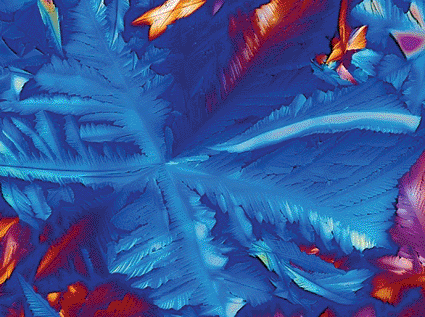Naturally Fluorescent Coenzyme Level in Mitochondria Indicative of Disease
By LabMedica International staff writers
Posted on 14 Apr 2009
To distinguish between normal and cancerous cells, scientists measured the fluorescence of natural nicotinamide adenine dinucleotide (NADH).Posted on 14 Apr 2009
NADH is a coenzyme, a non-protein molecule necessary for the functioning of an enzyme found mostly in the inner membrane of mitochondria. In the event of disease or a metabolic disorder, enzymes and their related reactions can become disabled, causing a buildup of unused NADH.

Image: Polarized light micrograph of crystals of the coenzyme nicotinamide adenine dinucleotide (NAD) (Photo courtesy of Alfred Pasieka / SPL).
Using a combination of spectroscopy and microscopy techniques, fluorescence was converted into an accurate measure of NADH concentration in live cells. Ahmed Heikal, associate professor of bioengineering, Pennsylvania State University (Pittsburgh, PA, USA) and colleagues found that the average concentration of NADH in breast cancer cells is about twice that in normal breast cells.
"Dysfunctional enzymes in the mitochondria are known to be associated with serious health problems such as cancer and neurodegenerative diseases," said Professor Heikal. "By detecting the level of NADH and its distribution inside living cells, we should be able to monitor the mitochondrial activity and thus the integrity of any given cell, without adding potentially toxic dyes or actually destroying the cell."
One of the main challenges in cancer diagnosis is the ability to differentiate cancer cells from normal ones at the early stages of tumor progression. "If we are given two live cells, one normal and the other cancerous, we could differentiate between the two with confidence," said Professor Heikal.
The team developed a technique called rotational diffusion imaging to establish a direct measure of the concentrations of free and enzyme-bound NADH throughout a living cell, whether in the cytosol (cell fluid) or the mitochondria.
Other neurodegenerative diseases related to mitochondrial anomalies can also be detected with the new technique, which is not limited to detecting cancer. The ability to accurately measure NADH levels in a cell without killing it could have potential implications for related research on human health and drug delivery.
Related Links:
Pennsylvania State University













